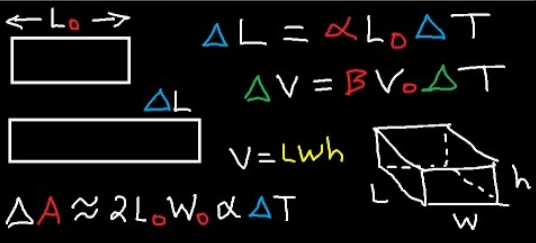In physics, the thermal expansion can be defined as any change in the width, length, volume, and height of any material by changes in the temperatures. In the solids, the thermal expansion is very evident as the atoms of the solids are densely packed.
Description of Thermal Expansion in Solids
Various solids are made up of the crystals, which are the regular shapes composed of the molecules joined to each other, though on the springs. When the spring is pulled back, just before its release, the potential energy is possessed by the spring, by the virtue of its position. At room temperature, the crystalline solids have less potential energy and fewer spaces in between the molecules. With the increase in the temperature, the expansion in the solid is observed. Resultantly, the spaces between the molecules are increased with the increase in the potential energy in the solid.
Linear Expansion, Area Expansion, and Volumetric Expansion
Depending on the shape of the body the dimensions are altered due to the thermal expansion. The thermal expansion can result in either area expansion, linear expansion, or volumetric expansion. The expansion that occurs in the length is known as the linear expansion. If the expansion is on two fronts such as breadth and length such as in case of heating the square tiles, then it is known as the area expansion. While, when a cube is heated then all of its sides are expanded, an overall increase in the volume will be experienced by the body, due to which this kind of expansion is termed as volumetric expansion.
Linear & Volume Expansion

Thermal Expansion of Solids in Everyday Life
In everyday life, there are various examples of the thermal expansion of the solids. For avoiding the harmful effects of due to the thermal expansion of the solids many techniques are utilized. The concrete which is used for building the roads is expanded in the summer. If there is no space to allow the expansion then the surface of the road is cracked. For avoiding such kind of damage, small gaps are left after a few meters in the roads, to allow the expansion. Similarly, thermal expansion is also harmful to the railway tracks. There is no welding of the railway tracks. Instead, they are laid in such a way, that some gaps are left between them. This allows the contraction and expansion during the winter and the summer seasons. If no gaps are provided then the tracks will be DE shape due to the thermal expansion.
